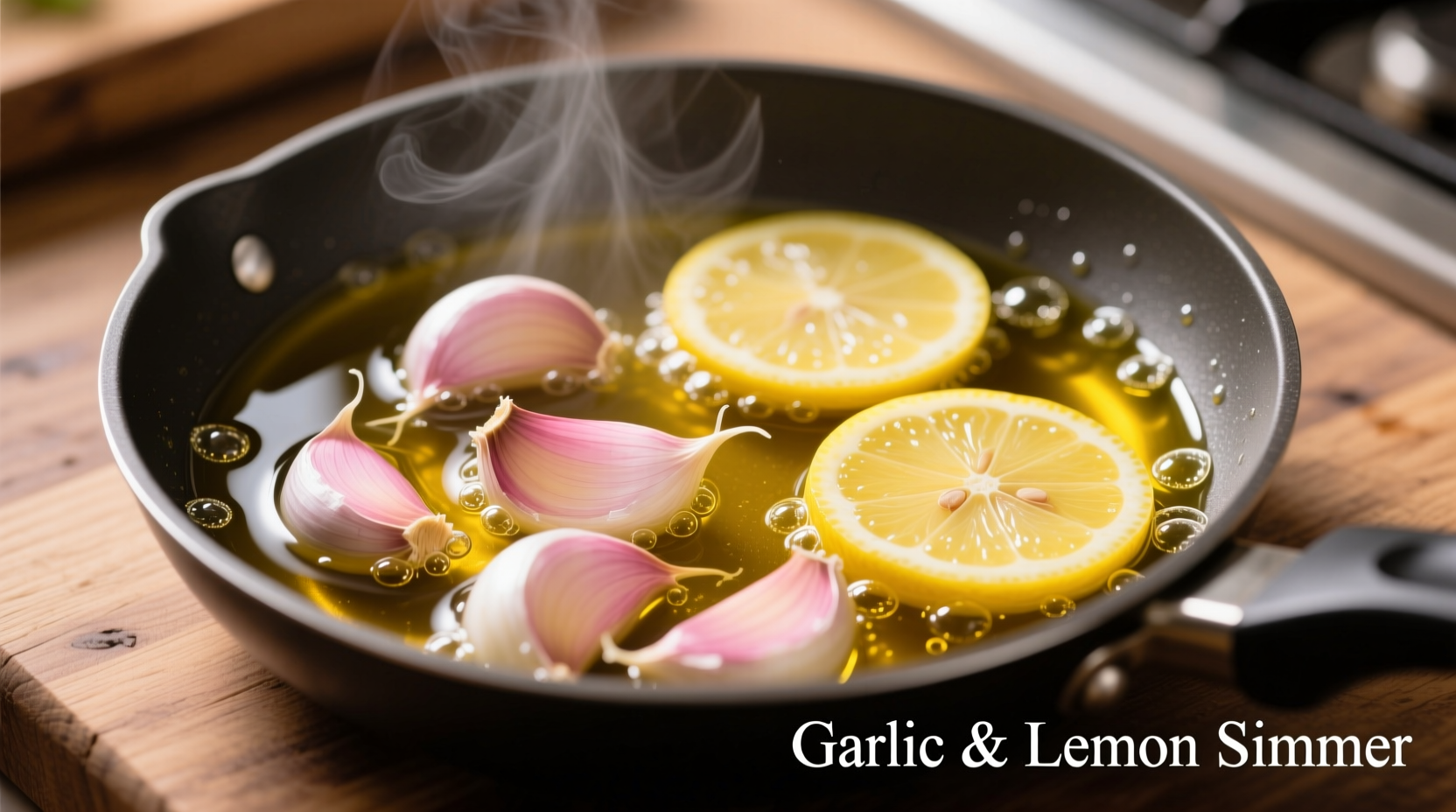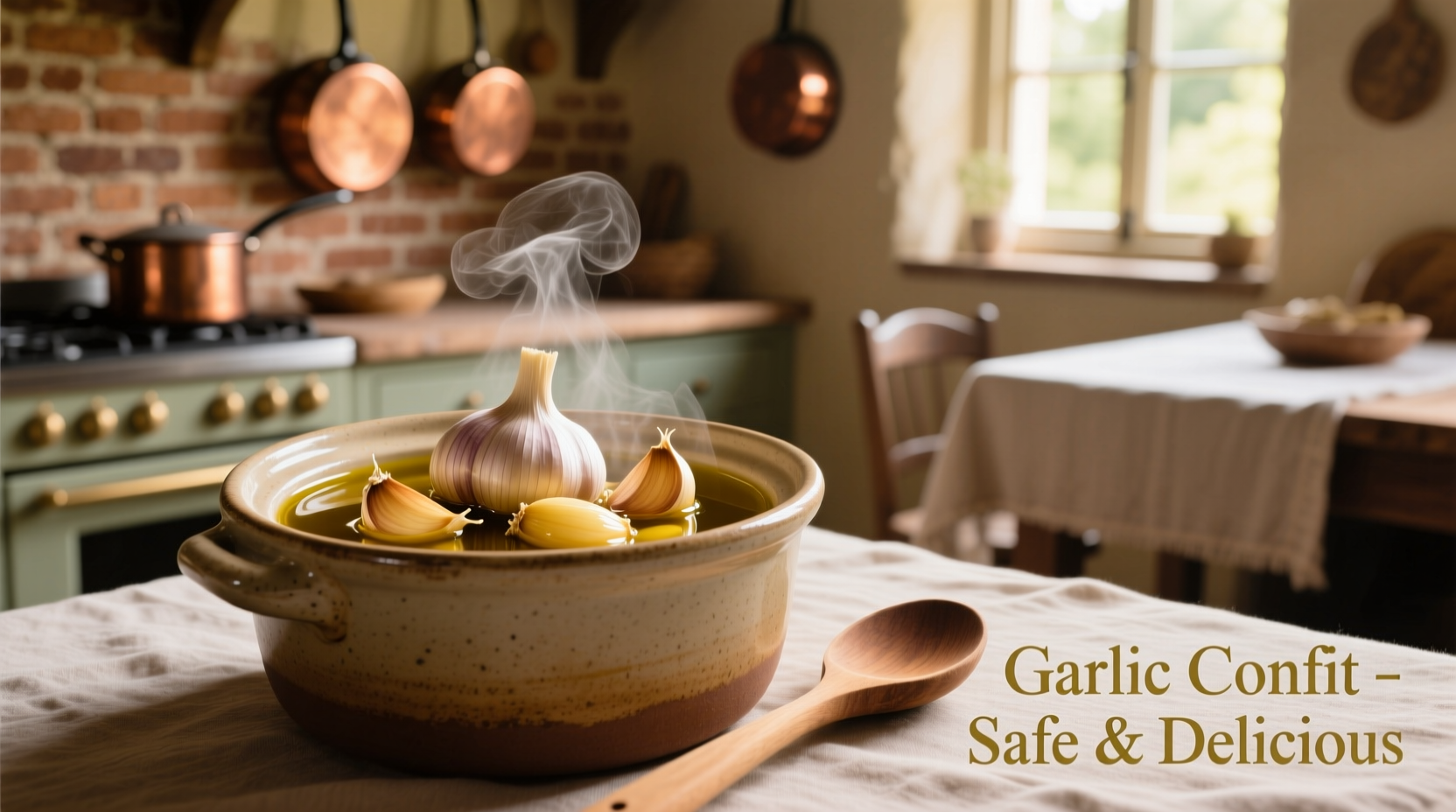Many home cooks avoid garlic confit fearing botulism, but understanding the actual science transforms this delicious technique from perceived danger to safe kitchen staple. When prepared correctly with attention to acidity and temperature control, garlic confit poses no greater risk than other preserved foods. The key lies in recognizing that botulism risk emerges only under specific conditions—primarily when garlic sits in oil at room temperature without sufficient acid.
Understanding the Real Botulism Risk in Garlic Confit
Clostridium botulinum spores naturally exist in soil and can contaminate garlic. These spores become dangerous when they germinate in anaerobic (oxygen-free) conditions with the right temperature and pH. Garlic's neutral pH (5.3-5.8) combined with oil's oxygen-blocking properties creates a potential hazard zone only when stored improperly.
"The misconception that garlic confit automatically causes botulism stems from incomplete understanding of food science," explains Antonio Rodriguez, culinary safety expert. "It's not the garlic or oil themselves, but the storage conditions that determine safety. Proper refrigeration below 38°F (3°C) prevents bacterial growth, while acidification creates an inhospitable environment."
| Risk Factor | Safe Practice | Danger Zone |
|---|---|---|
| pH Level | Below 4.6 (achieved with lemon juice/vinegar) | Above 4.6 (raw garlic in oil) |
| Temperature | Refrigerated below 38°F (3°C) | Room temperature storage |
| Storage Duration | Up to 4 weeks refrigerated | More than 4 days at room temperature |
| Preparation Method | Acidified during cooking | Raw garlic submerged directly in oil |
Safe Garlic Confit Preparation Protocol
Follow these evidence-based steps to eliminate botulism concerns while creating flavorful confit:
- Acidify during cooking: Add 1 tablespoon lemon juice or vinegar per cup of oil while simmering garlic (FDA recommends pH below 4.6)
- Maintain proper temperature: Keep mixture at 140°F (60°C) for at least 10 minutes to destroy enzymes that promote bacterial growth
- Cool rapidly: Transfer to refrigerator within 2 hours of cooking
- Use clean containers: Sterilize jars with boiling water before filling
- Label with date: Consume within 4 weeks for maximum safety
The National Center for Home Food Preservation confirms that acidified garlic confit stored refrigerated presents negligible risk. Their research shows that adding acid during preparation reduces botulism risk by creating an environment where Clostridium botulinum cannot produce toxins.
Storage Guidelines You Must Follow
Refrigeration isn't optional—it's essential. The FDA Food Code explicitly states that garlic-in-oil mixtures must be held at 41°F (5°C) or below. Room temperature storage for more than 4 hours creates potential danger, especially in warmer kitchens.
When storing your confit:
- Always keep submerged in oil (exposed garlic creates air pockets)
- Use within 4 weeks for optimal safety and flavor
- Discard immediately if you notice bubbling, cloudiness, or off odors
- Never store at room temperature, even for "just a few days"

Recognizing When Garlic Confit Has Gone Bad
Botulism toxin doesn't alter appearance, smell, or taste—this is why prevention matters more than detection. However, these visible signs indicate spoilage that requires immediate disposal:
- Cloudy oil (fresh confit oil remains clear)
- Bubbling or fermentation signs
- Mold growth anywhere in the container
- Off smells beyond normal garlic aroma
- Swollen lid on sealed containers
If you observe any of these signs, discard the entire container without tasting. The USDA Meat and Poultry Hotline emphasizes that when in doubt, throw it out—botulism poisoning can be fatal even from tiny amounts of contaminated food.
Commercial vs. Homemade Garlic Confit Safety
Store-bought garlic confit undergoes rigorous safety protocols you can't replicate at home. Commercial producers use:
- Pressure canning at 240-250°F (116-121°C)
- Strict pH monitoring below 4.6
- Preservatives like citric acid
- Specialized packaging that prevents oxygen exposure
This is why commercial products can be shelf-stable while homemade versions require refrigeration. The FDA requires commercial garlic-in-oil products to meet specific acidification standards before canning—something home kitchens cannot safely achieve without proper equipment.
Common Misconceptions Debunked
Myth: "Adding herbs makes garlic confit safer"
Fact: Herbs don't affect pH or prevent bacterial growth—they may even introduce additional contaminants.
Myth: "Heating garlic in oil kills all bacteria"
Fact: While heat destroys active bacteria, it doesn't eliminate dormant spores which can reactivate under improper storage.
Myth: "If it smells fine, it's safe to eat"
Fact: Botulism toxin is odorless and tasteless—relying on senses is dangerously unreliable.
Understanding these distinctions transforms garlic confit from feared hazard to confidently prepared kitchen staple. By following evidence-based safety protocols, you eliminate the botulism risk while enjoying this versatile culinary ingredient.











 浙公网安备
33010002000092号
浙公网安备
33010002000092号 浙B2-20120091-4
浙B2-20120091-4